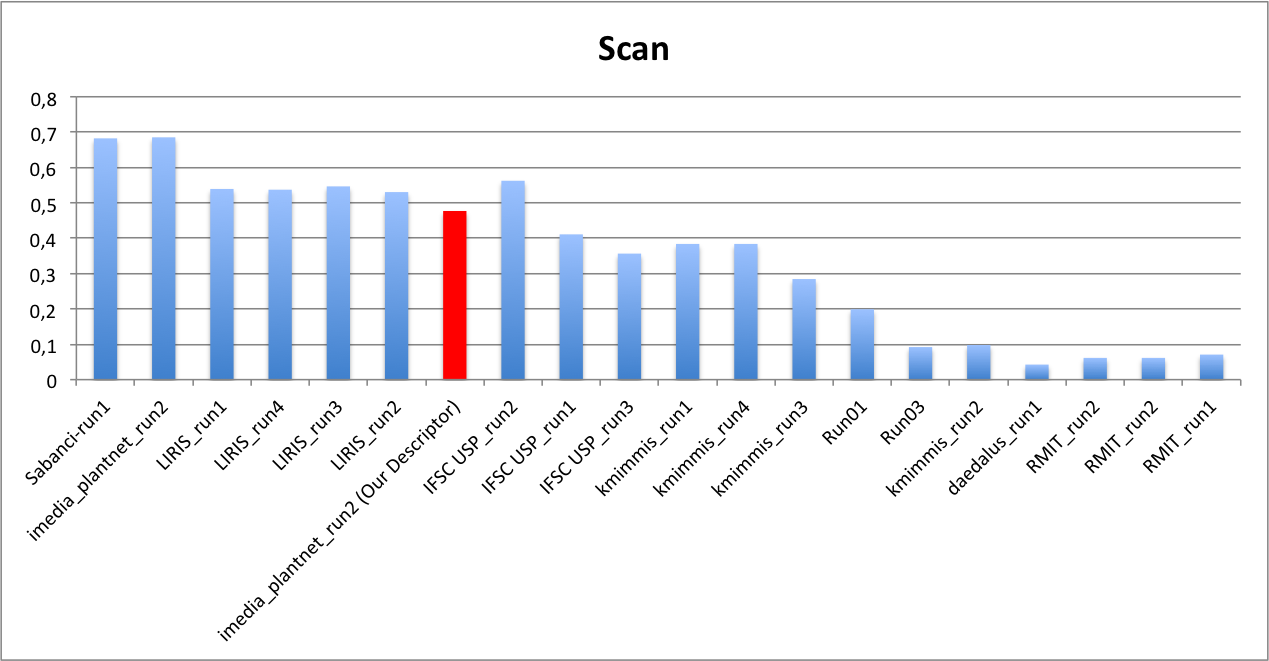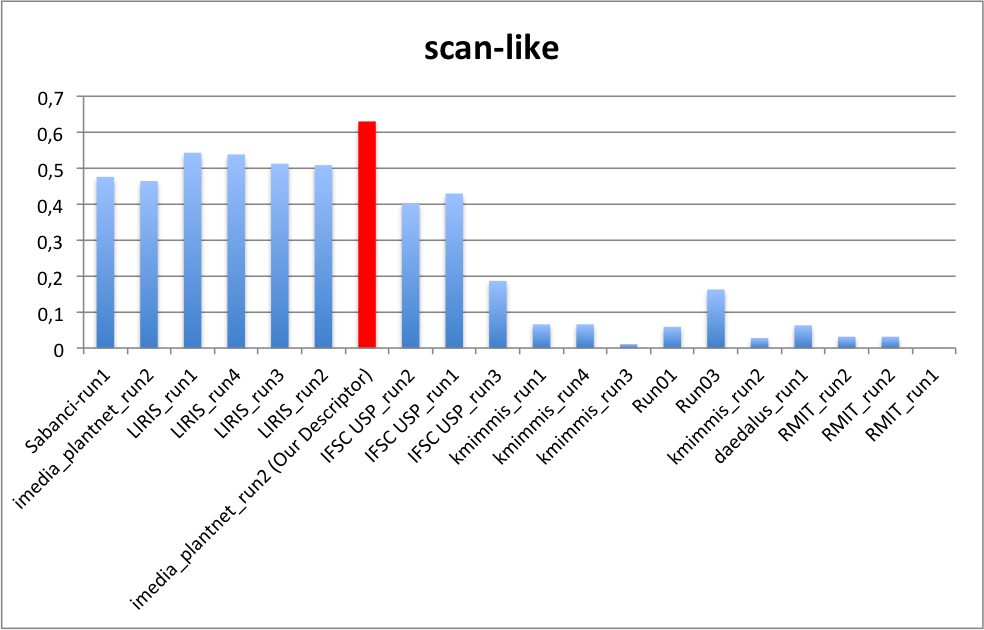Section: New Results
Feature space modelling
A novel shape boundary based description for leaf identification
Participants : Itheri Yahiaoui, Olfa Mzoughi, Nozha Boujemaa.
The problem of automatic leaf identification is particularly difficult for two main reasons: (i) the first is the enormous number of leaf species and (ii) the second , which is relevant for some special species but more complex, is the high inter-species and the low intra-species similarity.
Our research has focused on analysing leaf morphology in order to determine a numeric key description for leaf species robust to all the above mentioned constraints. The approach that we propose is a shape boundary description that combines two complementary information: (i) the first one outlines local variations of the leaf margin. This is performed using the Directional Fragment Histogram (DFH), introduced in [25] , which encodes the relative frequency distribution of groups of contour points with uniform orientation, (ii) the second property emphasizes the spatial distribution of contour points (in terms of distances). This is done by comparing the shape to standard geometric ones (such as circle, rectangle, ellipse, convex hull, etc.).
This descriptor was evaluated within the framework of ImageCLEF 2011 plant task where a crowd-sourced database, called Pl@ntLeaves [13] , was used and a high number of image retrieval techniques was tested (a total of 8 groups from all around the world that have submitted 20 runs [19] ). Our descriptor brought the best rate for scan-like pictures and was close to the best rate for scan pictures. Besides to the accuracy, this descriptor requires very low computational time, which accomplishes a basic condition for real world application.
|
Visual-based plant species identification from crowdsourced data
Participants : Hervé Goëau, Alexis Joly, Souheil Selmi, Laurent Joyeux.
Inspired by citizen sciences, the main goal of this work is to speed up the collection and integration of raw botanical observation data, while providing to potential users an easy and efficient access to this botanical knowledge. We therefore designed and developed an original crowdsourcing web application dedicated to the access of botanical knowledge through automated identification of plant species by visual content.
Technically, the first side of the application deals with content-based identification of plant leaves. Whereas state-of-the-art methods addressing this objective are mostly based on leaf segmentation and boundary shape features, we developed a new approach based on local features and large-scale matching. This approach obtained the best results within one sub-task of ImageCLEF 2011 plant identification benchmark [19] . The second side of the application deals with interactive tagging and allow any user to validate or correct the automatic determinations returned by the system.
Overall, this collaborative system allows to enrich automatically and continuously the visual botanical knowledge and therefore to increase progressively the accuracy of the automated identification. A demo of the developed application was presented at ACM Multimedia conference [13] . This work was done in collaboration with INRIA team ZENITH and with the botanists of the AMAP UMR team (CIRAD). It is also closely related to a citizen science project around plant's identification that we developed with the support of the TelaBotanica social network inside the Pl@ntNet project.
Spatial relations between salient points on a leaf
Participants : Sofiène Mouine, Itheri Yahiaoui, Anne Verroust-Blondet.
In the scope of the Pl@ntNet project, our recent work has consisted in finding spatial relationships between salient points on a leaf. As a first step, classic detectors were used to find significant points in the leaf area and then the Shape context descriptor, originally applied on contour points, was introduced to measure a spatial relation between interest points. We have tested different configurations by varying the set of voting points. First results confirm that including spatial relations enriches the local description of each point. We are currently improving a veins and landmark extraction approach [12] in order to include also veins points in the voting set.
3D mesh segmentation by example
Participants : Esma Elghoul, Anne Verroust-Blondet.
In recent years, there has been an increasing interest for automatic 3D segmentation. Indeed, segmentation of 3D objects is an important step in many applications such as part indexing of 3D objects, pattern recognition, compression, morphing, texture mapping and simplification. It refers to the process of partitioning 3D shapes into multiple parts, based on semantic criteria and/or geometric criteria.
Our work consists in introducing an approach to segment a 3D object class referring to a given segmented object from this class (we called it segmentation by example). The considered segmentation method is not automatic: we want to use interactive tools that proved advantageous to segment a 3D shape into relevant parts.
As a first task, we reviewed the state of the art in 3D segmentation techniques recently proposed in the literature. The different techniques were evaluated and classified for the purpose of choosing the more appropriate one for our work. We opted for extending the technique of random walks [24] to build an interactive tool of 3D segmentation.
For the second task, we had to solve a basic problem: that of similarly direct objects belonging to the same class. Indeed, each 3D model is provided in a random orientation in the space. In order to align objects of a same class, we used the alignment approach developed in [22] which computes 3 alignment axes. To properly orient our objects between them, we had to develop an additional process to the last one. It combines a 2D ICP and a 3D ICP approaches to give the best orientation among 48 possibilities and pair each two objects meshes.
So having a user-supplied already segmented model (model (1)) and a second model (model (2)) belonging to the same class (not segmented but similarly oriented), we developed a method to put into correspondence segmented parts of model (1) with faces of model (2). Then we computed a segmentation of model (2) using a derivative approach of the random walks. We applied this technique as well to segment all the objects that belong to the class of model (1). Our approach provides good results for manufactured object classes such as chairs and tables.




